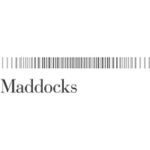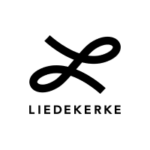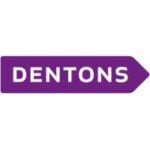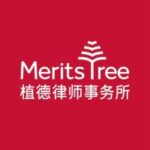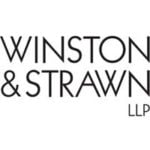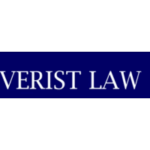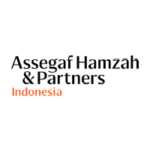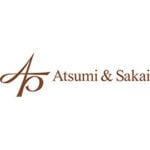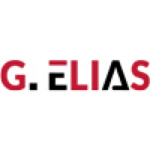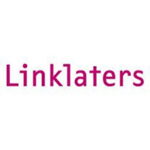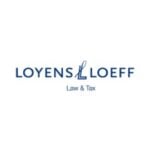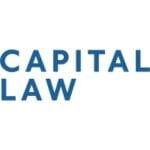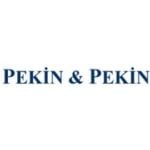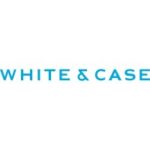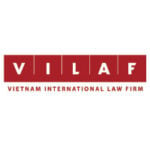-
Please briefly describe the regulatory framework and landscape of both equity and debt capital market in your jurisdiction, including the major regimes, regulators and authorities.
The main legislations governing equity and debt capital market in South Korea are the Financial Investment Services and Capital Markets Act (the “FSCMA”) and the Commercia Code. The main regulatory authorities of capital market in Korea include the Financial Services Commission (the “FSC”) and the Financial Supervisory Services (the “FSS”). The FSC is in charge of making policy decisions concerning capital market in Korea, and the FSS acts as enforcement arm responsible for conducting examination of financial institutions in Korea and enforcing other oversight activities as directed by the FSC.
-
Please briefly describe the common exemptions for securities offerings without prospectus and/or regulatory registration in your market.
The FSCMA defines a public offering of securities as an offering of securities to 50 or more offerees (with the total number of such offerees to include any offerees for the same kind of securities privately placed during the past six (6) months). The number of offerees, however, does not include certain related persons of the issuer and professional investors. Therefore, if an offering of securities is made to less than 50 offerees, filing of Securities Registration Statements (the “SRS”) will be exempted. However, even if the number of offerees is less than 50, an offering of newly issued securities of a listed company will be deemed to constitute a public offering unless the issuer takes some transfer restrictions-related measures (e.g., deposit with the Korea Securities Depository for one year lock-up) in respect of newly issued securities.
-
Please describe the insider trading regulations and describe what a public company would generally do to prevent any violation of such regulations.
Under the FSCMA, certain insiders of a company whose shares are listed on the stock market of Korea Exchange (the “KRX”), as well as any person who receives undisclosed material inside information directly from such insiders, are prohibited from using, or having any other person use, undisclosed material inside information regarding the company which has been obtained during the course of conducting the business of such insiders for the trading of securities issued by the company. Any person who violates this prohibition may be subject to civil penalties for the damages incurred by the investors, as well as criminal sanctions.
The “insiders” include (i) a director or employee of a corporation and (ii) any major shareholder. The “undisclosed material inside information” means any undisclosed information (i) the significance of which requires a public disclosure about such information by the corporation under the FSCMA and (ii) which might affect the investment decision of reasonable investors. The Presidential Decree of the FSCMA elaborates the types of such material inside information and includes as one of such information any change of the largest shareholder, the major shareholder and any affiliate companies of the company.
Under the FSCMA and the regulations thereunder, the disclosure of information regarding matters of a corporation would not generally be required unless (i) there was a board resolution about such matters or (ii) the director, the major shareholder or other such person of the corporation has made the final decision about such matters. Therefore, it is understood that merely engaging in a preliminary discussion on a potential transaction is unlikely to constitute “material inside information” to the extent that there is no substantial likelihood of conducting such transaction. However, according to judicial precedents, even in cases where details of a transaction have not yet been finalized, the information regarding such transaction may be deemed material enough to require public disclosure if a reasonable investor, in view of the significance of such information and the probability of such transaction in fact taking place, would consider having such information important in making his or her investment decision. Generally, public companies usually implement an education program for their employees to prevent insider trading. These programs are meant to educate employees about how to avoid involving in insider trading or sharing material nonpublic information.
-
What are the key remedies available to shareholders of public companies / debt securities holders in your market?
Any shareholder may bring an action to rescind a resolution adopted at a general meeting of shareholders within two months from the date of resolution, if the procedure for convening such general meeting of shareholders, or the manner in which any resolution has been adopted by it, is contrary to the law or the articles of incorporation, or is grossly unfair, or if the contents of the resolution are contrary to the articles of incorporation. Directors and statutory auditors also have a standing to bring this action.
Any dissenting shareholder may bring an action demanding that the company purchase his or her shares if a resolution is adopted calling for the transfer of the whole or an important part of the business of the company, the conclusion, alteration or rescission of a contract for leasing the whole business of the company, the sharing of the profits and losses of the business with another person, or the takeover of the whole business. Shareholders are afforded the same relief where there is a merger of the company with another, and where there is a spin-off in the company for the purpose of consolidation.
Any shareholder may bring an action to nullify a merger within six months from the date on which the registration of the stated capital has been effected. In addition, any director, statutory auditor, liquidator or administrator in bankruptcy of each of the companies, as well as any creditor who disapproved the merger, has a standing to bring this action.
Any shareholders may demand, at any time during business hours, to inspect or to make extracts from the articles of incorporation, the minutes of general shareholders’ meeting, as well as the board of directors’ meeting, a shareholder’s list and the corporate debenture register.
In addition, any shareholder may, at any time during business hours, inspect and, by paying such fees as fixed by the company, may demand delivery of a copy or an extract copy of a balance sheet, a profit and loss statement, a statement of earned surplus distribution or deficit disposal and a business report.
If the company issues shares in contravention of any law or regulation or the articles of incorporation, or in a grossly unfair manner, and a shareholder may suffer pecuniary disadvantage thereby, such shareholder may bring an action against the company to suspend such issuance. This action can be asserted only by means of an action brought within six months from the date such new shares have been issued. Directors and statutory auditors also have a standing to bring this action.
-
Please describe the expected outlook in fund raising activities (equity and debt) in your market in 2025.
In 2025, the equity capital market fundraising in South Korea is expected to see a rebound and increased activity, driven by factors like government support for shareholder-friendly policies and a growing optimism among investors. Private equity funds are also expected to play a significant role in corporate restructuring, potentially fueling M&A activity. The outlook for South Korea’s debt capital market fundraising will likely depend on economic and financial conditions, the sustainability of lower interest rates, and supply-demand dynamics. Future interest rate movements are expected to hinge heavily on the direction of inflation. While the recent easing of inflationary pressures may encourage central banks to implement further policy rate cuts, potential tariff policies under the new Trump administration could disrupt inflationary trends and interest rates. An anticipated decline in refinancing demand for credit bonds in 2025 will likely have a positive impact on the supply-demand balance in the market. However, the growth of Korea Treasury Bond (KTB) issuance may exert competitive pressure on the supply and demand of credit bonds. In addition to these internal conditions, Korea’s political instability could emerge as a critical factor affecting the credit bond market.
-
What are the essential requirements for listing a company in the main stock exchange(s) in your market? Please describe the simplified regime (if any) for company seeking a dual-listing in your market.
The KRX listing requirements are composed of quantitative component and qualitative component. The quantitative component of the requirements pertains to (i) the years of business operation, (ii) the amount of equity capital, (iii) the number of shares to be listed, (iv) the distribution of stocks, (v) the financial performance (profit or sales amount), etc. The qualitative component of the requirements pertains to the following three criteria: (i) business continuity, (ii) operational transparency and (iii) investor protection. Foreign applicants seeking to list their shares on the KRX must satisfy both the quantitative and qualitative components. Moreover, foreign applicants must retain legal advisor (consisting typically of a Korean law firm and a foreign law firm) for conducting legal due diligence and obtaining legal opinions which should be submitted to the KRX. For the sake of Korean investors’ protection, KRX requires a foreign applicant to include certain mandatory items in its articles of incorporation to the extent available under the law of its jurisdiction. Such mandatory items usually include and relate to the requirements for convening shareholders meeting, site of the shareholders meeting, the appointment of external directors and auditors, preemptive rights, the rights of inspection on books and records, minority shareholders’ rights, merger, capital reduction and the transfer of business. Additionally, foreign applicants should establish and operate an internal accounting system for at least 3 months in the same way as any local applicant is required to so in Korea. Accordingly, a foreign applicant is advised to prepare internal accounting control regulations, arrange for its internal team to oversee the operation of the aforesaid regulation and designate an internal accounting manager (full-time executive). For more detailed information about the listing on KRX, please visit website of the KRX (Global KRX).
There is no simplified regime available in Korea for a foreign applicant seeking a dual-listing in Kor.
-
Are weighted voting rights in listed companies allowed in your market? What special rights are allowed to be reserved (if any) to certain shareholders after a company goes public?
Weighted voting rights in listed companies are not permitted in South Korea. Also, there is no special right that can be allowed to shareholders after a company goes public.
-
Is listing of SPAC allowed in your market? If so, please briefly describe the relevant regulations for SPAC listing.
Yes, the listing of SPACs in Korea is permitted, and SPAC listing is regulated by the FSCMA. In South Korea, SPAC is a paper company listed on the KRX which is established by certain sponsors or managers with experience and knowledge in a specific industry or the field of M&A. The SPAC listing mechanism was first introduced to South Korea back in 2010, largely benchmarking the US SPACs. However, there are certain unique characteristics for Korean SPACs. For example, Korean SPACs issue only common stocks and they are not allowed to issue warrants. Rather than warrants, some SPAC sponsors can purchase convertible bonds. Secondly, the sole purpose of Korean SPACs is to merge with a target company and accordingly upon finding a target company, the Korean SPACs are only allowed to merge with such target. Thirdly, a large portion of the investors in the Korean SPAC IPOs are comprised of individuals with the portion of institutional investors being less than 50%.
-
Please describe the potential prospectus liabilities in your market.
Under the FSCMA, any purchaser of securities who suffers damage caused by any false or misleading statement of a material fact or by any omission to state a material fact required to be stated or necessary to make the statement not misleading, in each case relating to the SRS or the prospectus, including the preliminary prospectus (the “Prospectus”), has a claim to recover such loss from and against, among others, any of the issuer, its directors, the underwriter or such other parties that participated in the creation or distribution of the SRS or the Prospectus. The liabilities under the FSCMA are generally understood to be joint and several, which would mean that such purchaser of securities can seek recovery of damages from and against any one or more of the eligible defendants.
With respect to any forward looking statement contained in the SRS or the Prospectus, in addition to the due diligence defense described below, underwriter can be exempt from the liability under the FSCMA (e.g., the liability on the basis that the underwriter’s forward looking statement turned out to be untrue as contained in the SRS or the Prospectus) if all of the following requirements are satisfied: (i) the relevant information is identified as a forward looking statement, (ii) the basis of the forward looking statement is described, (iii) the forward looking statement was made with reasonable basis or assumptions and (iv) the cautionary statement is included to the effect that the actual result may vary. However, notwithstanding the satisfaction of the above requirements, the underwriter would nonetheless be liable under the FSCMA if investor of securities proves that (i) the investor had no knowledge regarding misstatement of such forward looking statement and (ii) there is a willful breach or gross negligence on the part of the underwriter in the preparation of such forward looking statements that turned out to be false.
Additionally, please note that class action lawsuits are now permissible in Korea. Under the Securities-related Class Action Act of Korea, one or more purchasers of securities of a listed company in Korea who claim to have been damaged in a capital markets transaction involving securities of such company, are permitted to raise a class action suit on behalf of 50 or more persons who collectively hold 0.01% or more of the shares of such company. The applicable causes of action with respect to such class action suits include, among others, the claims for damages under the FSCMA.
In order to avoid liability under the FSCMA in relation to a false or misleading statement of a material fact or omission to state a material fact in the SRS or the Prospectus, underwriter of securities has the burden of proving that either (i) it conducted sufficient due diligence on the issuing company but it nevertheless had no knowledge of such false or omitted statement or (ii) the investor of such securities had knowledge of such false or omitted statement at the time of the offering of the securities. With respect to item (i), based on an article written by a Korean judge, the level of due diligence required to be conducted in order for the underwriter to be exempt from the liability under the FSCMA would be such that the underwriter would need to have investigated the issuing company with a reasonable care and believed, with a legitimate reason, that the outcome of such investigation would be true.
-
Please describe the key minority shareholder protection mechanisms in your market.
Protection Afforded to Shareholders Holding 1% or More
There are rights exercisable by a shareholder holding at least 1% or more of the total number of the shares issued by the corporation. If a director or a liquidator commits an act in contravention of law or the articles of incorporation and the act is likely to cause irreparable damage to the company, 1% or more shareholders may demand the director or the liquidator to cease and desist such act on behalf of the company.
Shareholders holding 1% or more of the total shares may demand, in writing, that the company file an action against directors or statutory auditors to enforce their liability. If the company fails to file such action within 30 days from the date on which the demand has been made, the shareholder may immediately file such action on behalf of the company. The shareholder may sue without waiting for the lapse of the 30-day period if irreparable damage may be caused to the company. Once filed, the suit is not effected by the fact the shareholder’s share ownership subsequently falls below 1%, so long as such shareholder owns at least one share.
A company may not grant pecuniary benefit to any person in connection with the exercise of rights as a shareholder. If a company grants such pecuniary benefit, a 1% or more shareholders may file a shareholders’ derivative suit on behalf of the company.
Protection Afforded to Shareholder Holding 3% or More
Shareholders holding 3% or more of the total number of the shares may propose the inclusion of certain matters as the object or agenda of the shareholders’ meeting in a written application filed with a director at least six weeks before such meeting. The shareholder may also demand that the sum and substance of the proposed measures be included with the notice and public notice to convene the shareholders’ meeting. The director receiving such proposal must report to the board of directors, and the board of directors must include such proposal as the objects of the meeting unless it is in contravention of law or the articles of incorporation. Moreover, if the shareholder demands an opportunity to explain the proposal at the shareholders’ meeting, he must be offered the chance to do so.
Shareholders holding 3% or more of the total number of the shares may demand the convocation of an extraordinary general meeting, by filing with the board of directors a written application which state the object and reasons for such meeting. If the steps for the convocation of such meeting are not taken promptly after such demand has been made, the shareholder may convene such meeting with the permission of the court. At the meeting, an inspector may be appointed to investigate the affairs of the company and the state of its property.
When a shareholders’ meeting is convened where the object of such meeting includes election of two or more directors, 3% or more shareholders may, unless otherwise specified in the articles of incorporation, demand that the director be elected using cumulative voting. The demand must be made in writing at least seven days prior to the shareholders’ meeting. Once the demand is made, the shareholders receive, for each share, the same number of votes as the number of directors to be elected. The shareholder may cast the cumulative votes for one or more of the directors. The directors will be appointed in the order of votes received.
As you can see, cumulative voting rights will attach unless denied by the articles of incorporation, and a six-month grace period has been attached to this provision to provide sufficient time for amending the articles of incorporation for companies that wish to exclude cumulative voting.
When there is cause or reason to suspect that a dishonest act or act in material violation of law or the articles of incorporation was committed as related to the management of the company, 3% or more shareholders may apply to court for the appointment of an inspector to investigate the affairs of the company and the status of its property. The inspector must report on the results of the investigation to the court. If the court deems it necessary, it may order the representative director to convene a general shareholders’ meeting.
If the removal of a director or an auditor is rejected at a general shareholders’ meeting notwithstanding the existence of dishonest acts or any grave fact in violation of law or the articles of incorporation in connection with his or her duties, a 3% or more shareholder may apply to the court for removal of such director or auditor.
If a liquidator is remarkably unfit for administering the affairs of liquidation or has acted in contravention of his or her material duties, any 3% or more shareholder may apply to the court for removal of such liquidator from office.
Protection Afforded to shareholders Holding 10% or More.
Any shareholder with 10% or more of the total number of the shares may demand the court to dissolve the company if (i) the affairs of the company continue to be in serious deadlock and irreparable injury to the company is being suffered or threatened, or (ii) the management or disposal of the company’s property is grossly improper and the existence of the company is thereby in danger.
Any shareholder holding 10% or more the shares may file an application for the company reorganization with the court.
-
What are the common types of transactions involving public companies that would require regulatory scrutiny and/or disclosure?
Generally, M&A, acquisition (or disposal) of treasury shares and material asset (or business)1 transfer would require public disclosure. Under the Monopoly Regulation and Fair Trade Act (the “MRFTA”), the acquisition of the shares of a listed company not less than 15% of the total number of issued and outstanding shares of such company may trigger a requirement to file a business combination report depending upon the aggregate assets or sales revenue of the acquirer and/or the target.2 Such business combination report generally needs to be filed with the Korea Fair Trade Commission (the “KFTC”) within 30 days following the date of such acquisition. However, when one of the parties to a business combination is a large-scale corporation, a report must be filed with the KFTC for its review, and the KFTC clearance must be received before the acquisition.
Footnote(s):
1 If the value of the asset (or business) is more than 10 percent of total asset amount of the company, it will be deemed as a material asset (or business)
2 In the 2021 amended MRFTA, a threshold on the size of the transaction was added onto the existing threshold on the assets or revenue of the parties. The threshold on the size of the transaction applies when the transaction value is at least KRW 600 billion.
-
Please describe the scope of related parties and introduce any special regulatory approval and disclosure mechanism in place for related parties’ transactions.
Under the Commercial Code, if any of the following persons intends to engage in a transaction with the relevant company, such person is required to disclose material facts about the relevant transaction in advance at a BOD meeting and obtain approval from the BOD with two thirds or more of the total number of the registered directors.
- A director or a major shareholder (i.e., any shareholder who owns 10% or more of the total number of issued and outstanding shares).
- The spouse and lineal ascendants or descendants of a person falling under subparagraph 1 above.
- Lineal ascendants or descendants of the spouse of a person falling under subparagraph 1 above.
- A company in which half or more of the total number of issued and outstanding shares with voting rights are held by a person falling under any of subparagraphs 1 through 3 above, solely or jointly with others, or its subsidiary company.
- A company in which at least half the total number of issued and outstanding shares with voting rights are held by a person falling under any of subparagraphs 1 through 3 above, together with a company falling under subparagraph 4 above.
Also, under the Commercial Code, a listed company is required not to extend credit (referring to lending of money or any other property with economic value, including guarantees for the performance of obligations) to or for the benefit of any of the following persons:
- any controlling shareholder and such shareholder’s specially-related person3;
- any director (including any person who has used his or her influence on the company to direct a director to execute a task, who has personally executed a task in the name of a director, or who is not a director but has executed a task by using a name such as honorary chairman, chairman, president, vice president, executive vice president, senior vice president, director or any other name that may be deemed authorized to execute a task of the company); or
- any statutory auditor.
In spite of the foregoing restrictions, credit may be extended in any of the following cases:
- where money in the amount of up to 100 million won is lent to a director or a statutory auditor for the purpose of tuitions, housing loans, medical costs or any other fringe benefits as prescribed by the company;
- where credit is extended as permitted by other laws; or
- where credit is extended to or for the benefit of a controlling shareholder (including such shareholder’s specially-related persons) who is a body corporate in accordance with lawful procedures, and such extension of credit is not likely to undermine the operational integrity of the listed company and is necessary to achieve the operational objectives of such company.
Under the Commercial Code, a listed company with total amount of asset KRW 2 trillion or more as of the close of the most recent fiscal year that intends to enter into any of the following transactions with or for the benefit of such largest shareholder, specially-related person of the largest shareholder or specially-related person of the company shall obtain an approval from the BOD:
- any single transaction amounting to no less than the following amounts in terms of the total amount of assets or revenue:
- 1% of the total assets as of the close of the most recent fiscal year if the listed company is subject to inspection under Article 38 of the Act on the Establishment etc. of the FSC; or
- 1% of the total assets or total revenue as of the close of the most recent fiscal year if the listed company is not subject to inspection under Article 38 of the Act on the Establishment etc. of the FSC; or
- any transaction where the total amount of transactions, including the transaction in question, effected with a particular person during a given fiscal year is no less than the following amounts:
- 5% of the total assets as of the close of the most recent fiscal year if the listed company is subject to inspection under Article 38 of the Act on the Establishment etc. of the FSC; or
- 5% of the total assets or total revenue as of the close of the most recent fiscal year if the listed company is not subject to inspection under Article 38 of the Act on the Establishment etc. of the FSC.
However, any ordinary transaction specific to a line of business in which a listed company may be engaged can be entered into (a) without obtaining an approval from the BOD, if such transaction falls within the scope as set forth in subparagraph 1 below or (b) without reporting the details of such transaction to the general meeting of shareholders, if such transaction falls within the scope as set forth in subparagraph 2 below.
- Any uniform transaction under a standardized contract based on the Regulation of Standardized Contracts Act
- Any transaction effected in a manner not exceeding such total amount of transactions as approved by the BOD
1. Persons who fall under any of the following categories, if the shareholder is a natural person:
(a) Spouse (including a person who has a de facto marital relationship);
(b) Blood relatives in the sixth or closer degree;
(c) Marriage relatives in the fourth or closer degree;
(d) A corporation or organization and directors, executive officers and auditors thereof, where the shareholder, alone or jointly with the persons specified in items (a) through (c) above, has invested at least 30/100 of the equity capital of such corporation or organization or has de facto control over important matters in the management of the corporation or organization, including appointment and dismissal of directors, executive officers, and auditors;
(e) A corporation or organization and directors, executive officers and auditors thereof, where the shareholder, alone or jointly with the persons specified in items (a) through (d) above, has invested at least 30/100 of the equity capital of such corporation or organization, or has de facto control over important matters in the management of the corporation or organization, including appointment and dismissal of directors, executive officers, and auditors;
2. The following persons, if the shareholder is a corporation or organization:
(a) Directors, executive officers, and auditors;
(b) Affiliated companies and directors, executive officers and auditors thereof;
(c) A private individual who, alone or jointly with the persons specified in the items of subparagraph 1, has invested at least 30/100 of the equity capital of the shareholder or has de facto control over important matters in the management of the shareholder, including appointment and dismissal of directors, executive officers and auditors of the shareholder; persons or organizations in a relationship specified in the items of subparagraph 1 (excluding their affiliated companies; the same shall apply hereafter in this subparagraph) with the private individual; and directors, executive officers and auditors of such persons or organizations;
(d) An organization and directors, executive officers and auditors thereof, where the shareholder, alone or jointly with the persons specified in items (a) through (c) above, has invested at least 30/100 of the equity capital of such organization or has de facto control over important matters in the management of the organization, including appointment and dismissal of directors, executive officers, and auditors.
-
What are the key continuing obligations of a substantial shareholder and controlling shareholder of a listed company?
5% Reporting Rule
Under the FSCMA, any person whose direct or indirect holding4 of certain equity securities5 of a listed company, combined with equity securities directly or indirectly held by (i) certain specially related persons of such person or (ii) any person acting in concert with such person (the persons in items (i) and (ii) are collectively referred to as the “Joint Holders”), accounts for 5% or more of the total number of issued and outstanding equity securities of such listed company, is required, within five (5) business days of reaching such 5% holding, to file a report with the FSC and KRX concerning the status and purpose of the person’s aggregate holdings and material contents of any agreements relating to his or her equity securities holdings.
The above threshold ratio of 5% is calculated as follows:
In respect of a person and its Joint Holders, (The number of (i) the voting shares of the listed company held by such person and its Joint Holders and (ii) other equity securities of the listed company held by such person and its Joint Holders6)
divided by (÷)
((i) The total number of issued and outstanding voting shares of the listed company and (ii) the number of other equity securities of the listed company held by such person and its Joint Holders7)
In addition, after filing the aforementioned 5% report, the occurrence of any of the following subsequent changes with respect to such person’s shareholdings must be reported to the FSC and KRX within five (5) business days from the date of such change:
- any change to the shareholding of such person (including the Joint Holders) in a shareholding ratio equal to or greater than 1% of the total number of issued and outstanding equity securities of such listed company;
- any change to the purpose of shareholding from or to a ‘management participation purpose’ of such listed company;
- any change to the purpose of shareholding between ‘general investment purpose’ and ‘simple investment purpose’ (either of which is only applicable to the case where a person does not have a ‘management participation purpose’ of such listed company);
- any change to the material terms or conditions of any agreements (such as trust agreement or security agreement) relating to such person’s shareholding (with this item (iv) (a) applying only where the purpose of shareholding is ‘management participation purpose’ or ‘general investment purpose’ and (b) being triggered only if the number of the equity securities held by such person subject to such changed agreements are equal or greater than 1% of the total number of issued and outstanding equity securities of such listed company); or
- any change to the form of shareholding of such person (which means change to the form of shareholding between direct holding and indirect holding (with this item (v) (a) applying only where the purpose of shareholding is ‘management participation purpose’ and (b) being triggered only if the number of the equity securities held by such person subject to such change of the form of shareholding are equal or greater than 1% of the total number of issued and outstanding equity securities of the listed company).
10% Reporting Rule
Any person (i) whose direct or beneficial ownership of the shares issued by a listed company accounts for 10% or more of the total number of issued and outstanding voting shares of such listed company or (ii) who has de facto influence on important matters concerning the management of such listed company including the appointment or dismissal of a director of the listed company (any such person, hereinafter, a “Major Shareholder”)8, is required, within five (5) business days after the date on which his or her reporting obligation is triggered, to file a report on his or her shareholding status of ‘certain securities’9 of the listed company with the Securities and Futures Commission (“SFC”) and KRX. In addition, after filing the aforementioned 10% report, a Major Shareholder must file a report with the SFC and KRX regarding any subsequent change to his or her shareholding status of ‘certain securities’ within five (5) business days from the date of such change.
Footnote(s):
4 The term “direct holding” means the ownership for its own account in whosever name (e.g., nominee or other person holds legal title on behalf of the underlying shareholder). If a person holds the shares for its own account via one or more interposed legal entities, such person will be deemed to hold such shares.
The term “indirect holding” means any of followings:
(i) Where any claim for the delivery of the equity securities is held in accordance with the law or contract
(ii) Where voting rights (including the right to instruct the exercise of the voting rights) of the equity securities are held in accordance with the law or contract;
(iii) Where the authority to decide the acquisition or disposal of the equity securities is held in accordance with the law or contract;
(iv) Where any right to unilaterally complete the purchase and sale contract of the equity securities is held and the exercise of such right would result in the holder becoming the purchaser of such equity securities;
(v) Where any call option right whose underlying assets are the equity securities is held and the exercise of such right would result in the holder becoming the purchaser of such equity securities; or
(vi) Where employee stock options are held.
5 ‘Equity securities’ for the purpose of the 5% reporting rule mean shares with voting rights of a listed company and includes any securities issued by such listed company itself or others whose respective holders may, by the exercise of any related rights attached to such securities (such as CBs, BWs and EBs), ultimately acquire the shares with voting rights of the listed company. In this regard, cash-settled derivatives-linked securities will not be counted for the purpose of the 5% reporting rule as it is not interpreted as equity securities, while physically-settled derivatives-linked securities under which the holder has the right to elect for the physical delivery of the equity securities will be counted.
6 The factor of the number of “other equity securities of the listed company held by such person and its Joint Holders” in the numerator means the total number of voting shares issuable or acquirable as a result of full conversion or exercise of rights attached to such equity securities (including the existing voting shares acquirable by conversion or exercise of such rights (e.g., EB)).
7 The factor of the number of “other equity securities of the listed company held by such person and its Joint Holders” in the denominator means the total number of voting shares issuable as a result of full conversion or exercise of rights attached to such equity securities (however excluding the existing voting shares acquirable by conversion or exercise of such rights (e.g., EB) given that such existing voting shares are already included in the factor of “The total number of issued and outstanding voting shares of the listed company” in the denominator).
8 Unlike the 5% report, the requirements triggering the 10% reporting obligation of a person disregards (1) securities other than voting shares of the listed company owned by such person, (2) voting shares indirectly held by such person and (3) voting shares held by the Joint Holders of such person.
9 The ‘certain securities’ mean any of the following securities, and the shares without voting rights of the listed company are also included in such ‘certain securities’:
(i) any securities issued by the listed company (excluding debt securities, beneficiary certificates and derivative-linked securities other than (A) convertible bonds, (B) bonds with warrants, (C) bonds with rights to participate in dividends, (D) exchangeable bonds with a right to claim an exchange of such bonds with any shares of such listed company or securities under items (i)(A) to (C) above and (E) derivative-linked securities falling under item (iv) below);
(ii) any securities depositary receipts related to securities under item (i) above;
(iii) exchangeable bonds issued by any person other than the listed company with a right to claim an exchange of such bonds with securities under items (i) and (ii) above; and
(iv) any financial investment instruments, the underlying assets of which only consist of the securities under items (i) to (iii).
-
What corporate actions or transactions require shareholders’ approval?
Ordinary Resolution of Shareholders Meeting
An ordinary resolution requires the affirmative votes of a simple majority of the shares present or represented at a shareholders’ meeting, provided that such affirmative votes constitute at least 1/4 of the total outstanding voting shares of the company. Such voting requirement may be increased, but not reduced, by the articles of incorporation. Among the general corporate actions requiring an ordinary resolution, the following is worth nothing: (1) appointment of a director or auditor; (2) declaration of dividends; (3) approval of annual financial report; and (4) approval of competitive actions of a director.
Special Resolution of Shareholders Meeting
A special resolution is adopted by the affirmative votes of at least 2/3 of the shares present or represented at a shareholders’ meeting, provided that such affirmative votes constitute at least 1/3 of the total outstanding voting shares of the company. This voting requirement may be increased, but not decreased, by the articles of incorporation.
The following is a list of actions requiring a special resolution of the shareholders: (1) removal of director or auditor; (2) transfer, takeover, or lease of business; (3) amendment to the articles of incorporation; (4) merger with another company; (5) dissolution or continuation of the Company; and (6) reduction of paid-in capital.
Unanimous Voting
A few corporate actions must be authorized by the unanimous voting, i.e., an affirmative vote from all outstanding shares of the company. These actions include changing the corporate form from a chusik hoesa to a yuhan hoesa and discharging a director’s or auditor’s liability against the company.
-
Under what circumstances a mandatory tender offer would be triggered? Is there any exemption commonly relied upon?
Any person who intends to acquire certain equity securities of a listed company from ten (10) or more persons during any 6-month period through a transaction or a series of transactions executed outside a securities market and, as a result of such transaction(s), it directly or indirectly holds 5% or more of the total number of such equity securities of a listed company when aggregated with the equity securities of the listed company held by its Joint Holder,10 is required to acquire such equity securities in compliance with the tender offer rules under the FSCMA. Notwithstanding the foregoing, the acquisition of newly issued shares upon the exercise of conversion rights with respect to convertible bonds will be exempt from the requirement to comply with the foregoing tender offer rules.
Footnote(s):
10 The terms of “equity securities”, “hold” and “Joint Holder” have the same meanings as those used in the 5% reporting rule.
-
Are public companies required to engage any independent directors? What are the specific requirements for a director to be considered as “independent”?
As for the composition of the BOD of a listed company, more than 1/4 of the BOD members should be an outside director. If the total asset amount of the listed company is KRW 2trillion or more, 3 or more outside directors should be members of the BOD, which should constitute a majority of the BOD. Any of following persons would be disqualified from acting as an outside director of a listed company;
- Directors, executive directors and employees who are engaged in the regular business of the company, or directors, auditors, executive directors and employees who have engaged in the regular business of the company within the latest two years;
- The principal, his or her spouse, lineal ascendants and descendants, in cases where the largest shareholder is a natural person
- Directors, auditors, executive directors and employees of the largest shareholder, in cases where the largest shareholder is a corporation;
- The spouses, lineal ascendants, and lineal descendants of directors, auditors and executive directors of the company;
- Directors, auditors, executive directors and employees of a parent company or a subsidiary company of the company;
- Directors, auditors, executive directors and employees of a corporation which has a significant interest in the company, such as business relations with the company;
- Directors, auditors, executive directors and employees of another company for which directors, executive directors and employees of the company serve as directors and executive directors.
- A largest shareholder and his or her specially-related persons
- A Major Shareholder, his or her spouse, lineal ascendants, and descendants
A person determined by the Presidential Decree to the Commercial Code, who has difficulty faithfully performing any of his or her duty as an outside director, or who may have an influence on the management of the listed company.
-
What financial statements are required for a public equity offering? When do financial statements go stale? Under what accounting standards do the financial statements have to be prepared?
For a public equity offering , the audited financial statements for the last 3 years should be provided to the FSS. The financial statements should be prepared in accordance with the K-IFRS.
-
Please describe the key environmental, social, and governance (ESG) and sustainability requirements in your market. What are the key recent changes or potential changes?
Currently, there are two disclosure obligations applicable to listed companies in Korea as pertaining to ESG
Corporate Governance Report
Since 2019, the KRX has required companies listed on the KOSPI Stock Market Division with total assets of KRW 2 trillion or more to disclose corporate governance reports. Through amendments to the relevant exchange regulations, the Korea Exchange is gradually expanding the companies subject to mandatory disclosure as below table.
Applicable Period 2019 2022 2024 2026 Total asset amount KRW 2 trillion or more KRW 1 trillion or more KRW 500 billion or more All listed companies on the KOSPI Stock Market Division Sustainable Management Reports
Currently around 100 companies publish sustainable management reports every year, but as of 2022, despite the expansion of ESG-related investments, only 20 companies voluntarily disclose such reports to the KRX. The FSC has sought to increase the number of disclosures from such low levels, and to clarify the standards when preparing such reports.
- Phase 1 (by 2025): promote voluntary disclosure of sustainable management reports.
- Phase 2 (from 2025 to 2030): Make disclosure of sustainable management reports mandatory for companies of a certain size listed on the KOSPI Stock Market Division.
- Phase 3 (2030 and later): Make disclosure of sustainable management reports mandatory for all companies listed on the KOSPI Stock Market Division.
On December 27, 2022, the Ministry of Finance and Economy announced “ESG System Development Plan”. According to the plan, ESG disclosure system will be improved in accordance with global standards and investment of ESG bond and EESG fund will be vitalized in year of 2023.
-
What are the typical offering structures for issuing debt securities in your jurisdiction? Does the holding company issue debt securities directly or indirectly (by setting up a SPV)? What are the main purposes for issuing debt securities indirectly?
Depending on submission of the SRS, the method of offering debt securities in Korea includes private placement and public offering. The types of debt securities include (a) debt securities without any security and/or guarantee (the “Unsecured Bonds”) vs secured debt securities and/or guaranteed debt securities and (b) regular debt securities vs. debt securities for securitization purposes (the “ABS Bonds”).
The structure for issuing debt securities for securitization purposes typically utilizes a SPV and other than such ABS Bonds, debt securities in Korea are issued directly by operating companies themselves as the issuer of relevant debt securities.
The debt securities in Korea also include (i) hybrid bonds issued for being treated as capital under certain accounting standards applicable to the issuer (such as K-IFRS etc.), (ii) bonds issued by financial institutions for being treated as regulatory capital under the regulatory capital requirements of the laws and regulations applicable to such financial institution (in the case of banks, BIS BASEL III standards) and (iii) bonds whose principal and interest amount is designed to, upon occurrence of certain financial events set forth in the related bond terms and condition, be written off or converted into equity (so called ‘contingent convertible bonds’ or ‘COCO bonds’).
-
Are trust structures adopted for issuing debt securities in your jurisdiction? What are the typical trustee’s duties and obligations under the trust structure after the offering?
Other than the ABS Bonds, trust structures are not typically employed in issuing debt securities in Korea. For any public offering of debt securities, it is required that a bond administrator be appointed. While the issuer appoints a bond administrator, such bond administrator is required to act as agent of the bondholders in accordance with the Commercial Code (for matters such as convening bondholders’ meetings, enforcement actions etc.), practically holding a similar position as that of bond trustees in respect of offshore debt securities.
Under the Secured Bond Trust Act of Korea, the issuer of secured debt securities is required to appoint a trustee to act as the pledgee for protecting the interest of the holders of debt securities. However, for enhancing the credit profile of debt securities, most issuers in Korea often rely on guaranteed debt securities, rarely issuing secured debt securities.
As for the ABS Bonds for which the trust structure is often employed, a main purpose of using the trust structure is to achieve insolvency remoteness of the trust assets entrusted with the trustee by the originator. However, trust certificates issued by the trustee are not widely accepted as standardized financial investment product in Korea. As such, a 2-step securitization structure is often utilized whereby the trust certificate issued by the trustee is first transferred to the SPV which, on the basis of such trust certificate then, issues the ABS Bonds to investors.
-
What are the typical credit enhancement measure (guarantee, letter of credit or keep-well deed) for issuing debt securities? Please describe the factors when considering which credit enhancement structure to adopt.
For the issuers of debt securities (other than the ABS Bonds) which may face difficulties in issuing such debt securities in the form of Unsecured Bonds considering their credit rating etc., they often rely on issuing guaranteed debt securities (but rarely secured debt securities), as explained above.
As for the ABS Bonds, there are numerous credit enhancement measures, such as (i) the originator acquiring the subordinate tranche of relevant trust certificates and/or ABS Bonds, (ii) a third party financial institution agreeing to provide a junior loan to the SPV for any cashflow shortfall, (iii) a third party financial institution agreeing to provide a commitment to underwrite a new series of ABS Bonds to be issued for redeeming the existing series of ABS Bonds or (iv) a third party financial institution agreeing to provide certain guarantee in respect of the ABS Bonds etc. However, the credit enhancement measures provided by a third party financial institution are more frequently adopted recently than the credit enhancement measure involving the originator’s acquisition of the subordinated tranche of ABS Bonds as the latter may affect in terms of the originator obtaining the off-balance accounting treatment.
-
What are the typical restrictive covenants in the debt securities’ terms and conditions, if any, and the purposes of such restrictive covenants? What are the future development trends of such restrictive covenants in your jurisdiction?
The typical restrictive covenants for debt securities in Korea include (i) financial covenants requiring the issuer to, for example, maintain certain level of financial ratios (e.g., Net Debt to EBITDA etc.), (ii) information covenants requiring the issuer to, for example, provide audited financial statements, (iii) negative covenants requiring the issuer not to, for example, engage in certain M&A, corporate reorganization, business transfer transactions, provide certain guarantee or security to third parties etc. Some of the major purposes of such restrictive covenants are to monitor the financial status of the issuer, as well as to prevent the issuer from engaging in any acts or transactions that may otherwise have adverse impact on its operation and/or financial status.
The restrictive covenants for private placement of debt securities generally are more diverse and wider in scope than those for public offering. For mezzanine debt securities (such as CBs, BWs, EBs etc.) in particular, the trend is that the related restrictive covenants seem more actively stipulated and whose scope can be comparable to restrictive covenants contained in the shareholders agreement for equity investments insofar as relating to the rights to appoint officers, the rights of consenting to certain management issues etc.
-
In general, who is responsible for any profit/income/withholding taxes related to the payment of debt securities’ interests in your jurisdiction?
Under the Korean tax law, interest on debt securities issued by a Korean company is withheld by the party paying such interest. Therefore, in cases where a Korean company issues a debt security within Korea or where a Korean company issues a debt security to non-residents overseas, the party paying the interest has withholding obligation in Korea. In this regard, the Korean tax law states that (i) issuer, (ii) a party who has been delegated by the issuer to act as a withholding agent or (iii) party who is deemed to have been delegated by the issuer to act as a withholding agent (e.g., financial institutions) can withhold taxes on interests paid on debt securities issued by Korean companies. On the other hand, under the Act on Restriction of Special Taxation, there is no withholding obligation on interests paid (i) to foreign companies or non-residents without any place of business in Korea, (ii) on debts issued abroad by domestic company and (iii) denominated in foreign currency. Furthermore, in case of a foreign company paying interests on debts issued in Korea, there is also no withholding tax levied on those interest paid by such foreign companies.
-
What are the main listing requirements for listing debt securities in your jurisdiction? What are the continuing obligations of the issuer after the listing?
Of the securities markets of the KRX, debt securities can be listed only within the KRX KOSPI Market division. The listing requirements for debt securities are simpler and more streamlined than the listing requirements for equity securities and do not include, unlike equities, the preliminary review of listing eligibility requirements.
The listing requirements under the KRX KOSPI Listing Rules include, inter alia, (i) the minimum capital requirement for the issuer (KRW500m), (ii) the minimum issuance amount for relevant debt securities (KRW300m), (iii) the ‘offering’ or ‘sale’ of relevant debt securities to be made in accordance with the SRS submitted to the FSC.
The continuing obligations of the issuer post the listing include maintaining capital, public disclosure of annual business reports in compliance with the FSCMA, maintaining the audit opinion of an external auditor of the issuer on its financial statements as ‘unqualified’, not being subject to any of the delisting events under the KRX KOSPI Listing Rules by way of the issuer maintaining certain level of business activities etc.
South Korea: Capital Markets
This country-specific Q&A provides an overview of Capital Markets laws and regulations applicable in South Korea.
-
Please briefly describe the regulatory framework and landscape of both equity and debt capital market in your jurisdiction, including the major regimes, regulators and authorities.
-
Please briefly describe the common exemptions for securities offerings without prospectus and/or regulatory registration in your market.
-
Please describe the insider trading regulations and describe what a public company would generally do to prevent any violation of such regulations.
-
What are the key remedies available to shareholders of public companies / debt securities holders in your market?
-
Please describe the expected outlook in fund raising activities (equity and debt) in your market in 2025.
-
What are the essential requirements for listing a company in the main stock exchange(s) in your market? Please describe the simplified regime (if any) for company seeking a dual-listing in your market.
-
Are weighted voting rights in listed companies allowed in your market? What special rights are allowed to be reserved (if any) to certain shareholders after a company goes public?
-
Is listing of SPAC allowed in your market? If so, please briefly describe the relevant regulations for SPAC listing.
-
Please describe the potential prospectus liabilities in your market.
-
Please describe the key minority shareholder protection mechanisms in your market.
-
What are the common types of transactions involving public companies that would require regulatory scrutiny and/or disclosure?
-
Please describe the scope of related parties and introduce any special regulatory approval and disclosure mechanism in place for related parties’ transactions.
-
What are the key continuing obligations of a substantial shareholder and controlling shareholder of a listed company?
-
What corporate actions or transactions require shareholders’ approval?
-
Under what circumstances a mandatory tender offer would be triggered? Is there any exemption commonly relied upon?
-
Are public companies required to engage any independent directors? What are the specific requirements for a director to be considered as “independent”?
-
What financial statements are required for a public equity offering? When do financial statements go stale? Under what accounting standards do the financial statements have to be prepared?
-
Please describe the key environmental, social, and governance (ESG) and sustainability requirements in your market. What are the key recent changes or potential changes?
-
What are the typical offering structures for issuing debt securities in your jurisdiction? Does the holding company issue debt securities directly or indirectly (by setting up a SPV)? What are the main purposes for issuing debt securities indirectly?
-
Are trust structures adopted for issuing debt securities in your jurisdiction? What are the typical trustee’s duties and obligations under the trust structure after the offering?
-
What are the typical credit enhancement measure (guarantee, letter of credit or keep-well deed) for issuing debt securities? Please describe the factors when considering which credit enhancement structure to adopt.
-
What are the typical restrictive covenants in the debt securities’ terms and conditions, if any, and the purposes of such restrictive covenants? What are the future development trends of such restrictive covenants in your jurisdiction?
-
In general, who is responsible for any profit/income/withholding taxes related to the payment of debt securities’ interests in your jurisdiction?
-
What are the main listing requirements for listing debt securities in your jurisdiction? What are the continuing obligations of the issuer after the listing?
